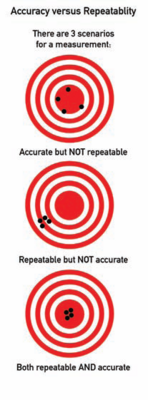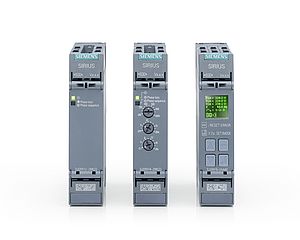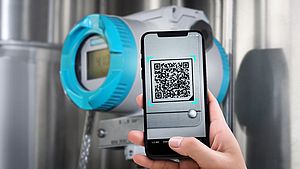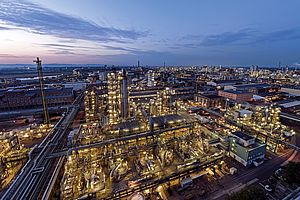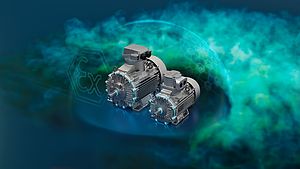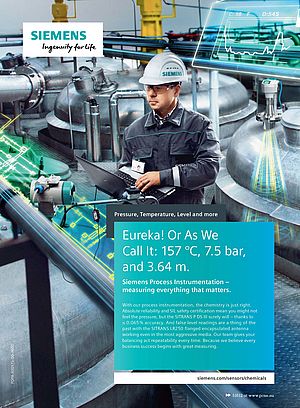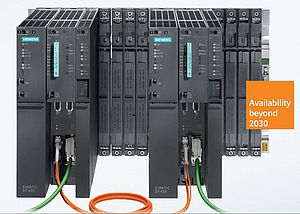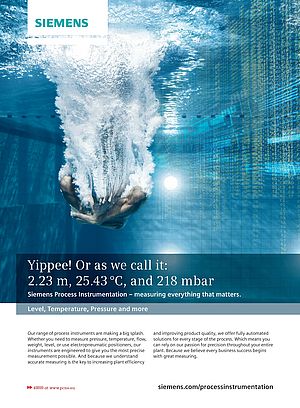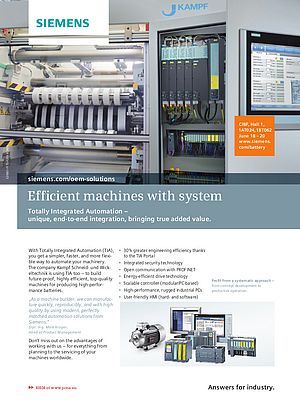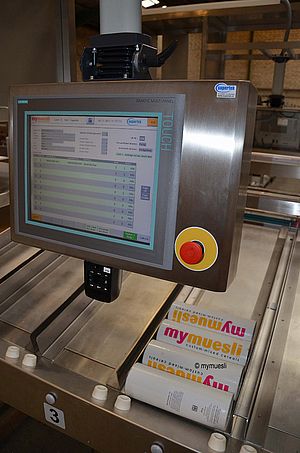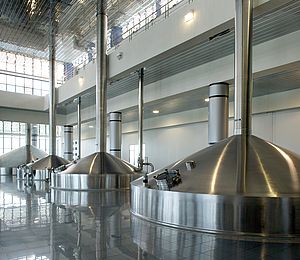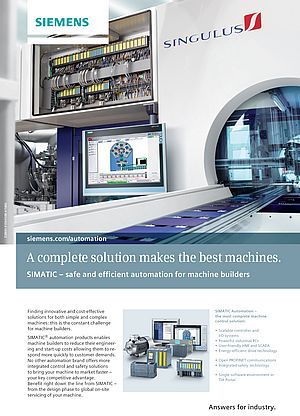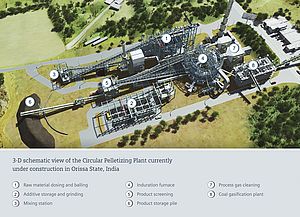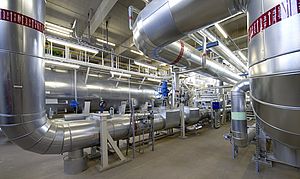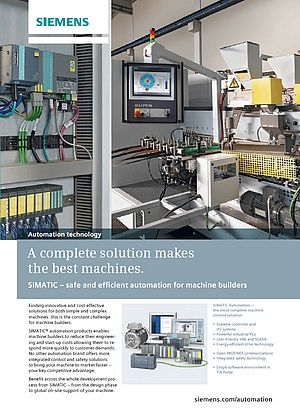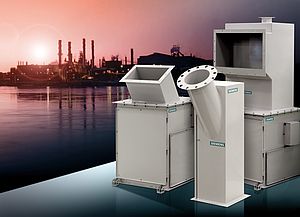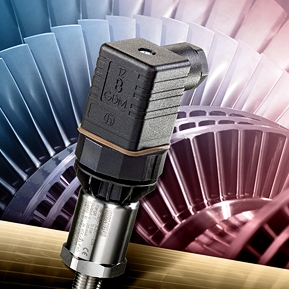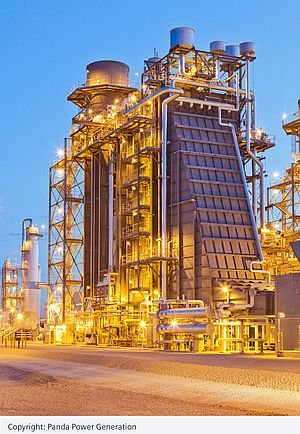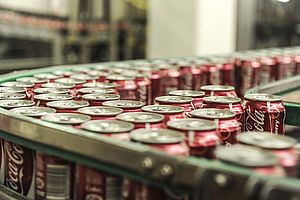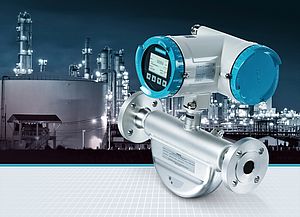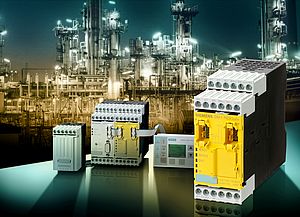Understanding the accuracy of a given flowmeter is an important field but it can also be misleading as different specifications are applied to explain how accurate a flowmeter measurement actually is.
The reasons for dealing with accuracy are many-fold. One important reason is to save money by accurately measuring the medium. E.g. If the medium is expensive such as oil, it is important to know exactly how much of the medium is being consumed. This ensures it is being consumed as efficiently as possible.
Another reason is in terms of dosing, where a given amount of a medium is added. This must be done with a high level of precision and accuracy is thus important. This is critical in certain industries such as pharma or chemical. A third reason is in terms of billing purposes. With good accuracy, you know exactly how much fluid flows into the production process. Thereby, you are able to determine the right price for the product and thereby also bill the customers correctly.
Therefore, knowing how much medium flows through your system is paramount in order to make a profitable and solid business. You need to rely on a precise measurement with good accuracy. However, good accuracy must be obtained not only in one measurement, but in all measurements independent of the time. The challenge is to measure the precise flow accurately over a long time period.
Understanding accuracy includes the issue of repeatability. One parameter is to measure accurately but repeatability is also important – meaning that the device provides the same indication for the same flowing conditions at different times. Depending on the application, accuracy and repeatability may be critical.
Some might believe good repeatability is a measure of accuracy but that is incorrect. To understand the difference between accuracy and repeatability, imagine an archer shooting at a conventional archery target. Suppose one archer hits the bulls-eye consistently. Because he was always accurate, the shots were repeatable. Now imagine an archer that hits the target but misses the bulls-eye consistently. Although the archer has good repeatability, the archer was not accurate. Thus, good repeatability does not guarantee accuracy.
The field of flowmeter accuracy is easily misunderstood as different specifications are applied. Normally, accuracy is expressed in the following formats:
•Accuracy of full scale
•Accuracy of rate
•Accuracy of rate and zero point
•Alternatively, no specification
Accuracy of full scale is a percentage of the maximum flow rate and is independent of the actual flow rate. This raises some interesting challenges as the actual flow rate is not part of the measurement specification. In cases of low flow, this is important to note as it might give a biased - and to some extent wrong -measurement.
The second specification is the accuracy of rate. Accuracy of flow rate is defined as a percent of the actual flow rate the meter is currently reading. An important factor when dealing with accuracy at flowing rate is to be aware of the minimum flow (typically between 0.5-10m/s), where the accuracy is defined in advance. This is normally specified in accuracy of full scale, the zero point or a mixture of these two.
Over the years more and more suppliers have changed to specify the flowmeter with the terminology “accuracy of rate ± the zero point value”.
This specification is also supported by the new ISO Standards for magnetic flowmeters. As indicated, the specification consists of two values; the base accuracy of rate and the zero point. The “base accuracy of rate” is describing the operational tolerance and the accuracy of the calibration rig used to calibrate the meter. The benefit of this specification is that it describes the real performance of the sensor independently of the flow rate, it being either very low or very high. This is made possible because of the zero point specification. Depending on the performance, the sensor typically has a zero point between ± 1-3mm/s. This means that this specification type is considered to provide the truest and fairest view of accuracy.
Finally, the worst case scenario is that no specification is mentioned at all. Many flowmeter manufacturers simply write that e.g. the flowmeter has an accuracy of 0.2%. This incomplete specification is not valid and the actual user of the flowmeter does not know the actual accuracy of the flowmeter.
An example of how accuracy can be listed is the electromagnetic flowmeter SitransF M MAG 8000. This meter has an accuracy of rate ± the zero point of 0.2% ± 2mm/s in the sizes DN 50-300. As mentioned earlier, it is essential to include the speed of the flow as this affects the accuracy. When the speed of the flow is slow, the inaccuracy will turn out to be larger and vice versa. The SitransF M MAG 8000 is a flowmeter applied in different water applications, where different kinds of flow rates are experienced – both high and low peak demand flows. This demonstrates the importance of being cautious in choosing the right meter type for those flow variables.
To ensure continuous accurate measurement, flowmeters must be calibrated. Thus, as a rule, every flowmeter is calibrated before it leaves the factory, in order to compensate for material and manufacturing tolerances. This ensures that the flowmeter lives up to the stated accuracy, and is thus a quality mark for the flowmeter. Moreover, calibration is performed in order to fulfill legal and metrological requirements set within the field.
A set of reference conditions are established in order to validate the calibration. Examples of these conditions are: the temperature of the medium, the supply voltage, the warming- up time and the flow conditions.All measuring instrumentation used in the calibration of the flowmeter, has either been calibrated by an accredited laboratory or has been calibrated against certified master sensors. This provides an unbroken chain of measurement traceability to national standards. The calibration certificate is shipped with every sensor and moreover calibration data are stored. The accuracy of the flowmeter device is trustworthy as the calibration is certified. An example of this certification is the EN ISO/IEC 17025:2005 accredited by DANAK or UKAS.
As outlined in the article, it can be difficult to choose the right flowmeter when it comes to understanding accuracy. Depending on the applied accuracy specification, the performance of the flowmeter will vary and this will eventually seem misleading to the customer. This is important to bear in mind when comparing differentflowmeters and their features. It mightseem difficult to know how to select the right flowmeter based on the accuracy specifications. However, it is necessary to understand how the accuracy is defined as it effects your business. If you know exactly how much of a given medium you have running in your production line, you will save money and thus be able to provide the correct billing and monitoring of consumption of the given medium.
(Mis)understanding flowmeter accuracy
Understanding the accuracy of a given flowmeter is an important field
- by Siemens AG
- October 1, 2009
- 332 views



